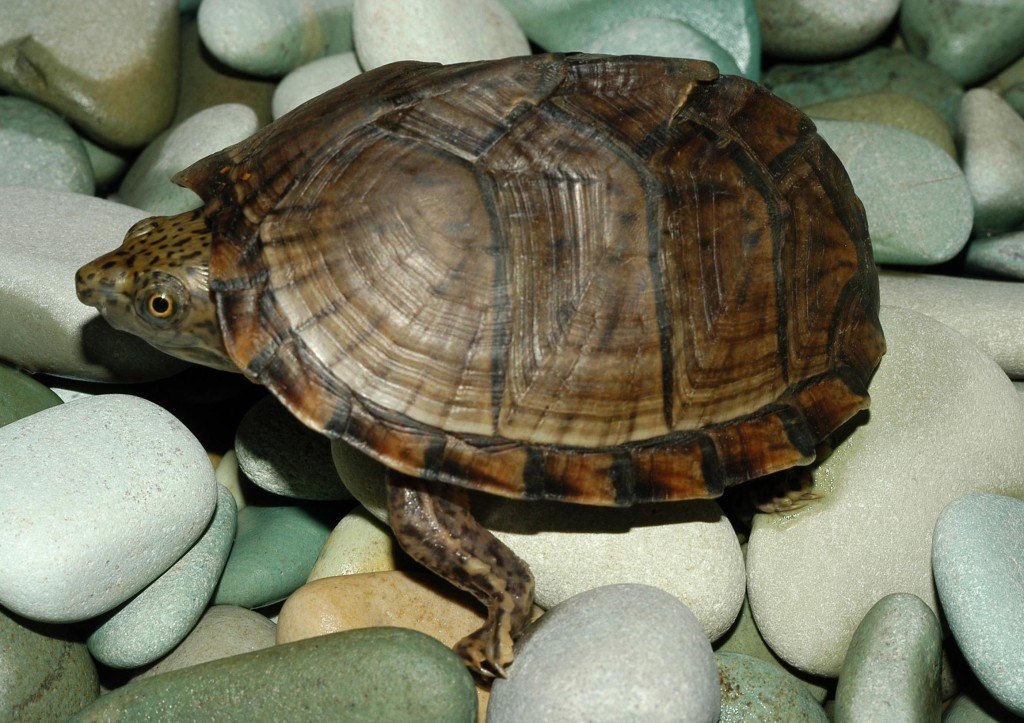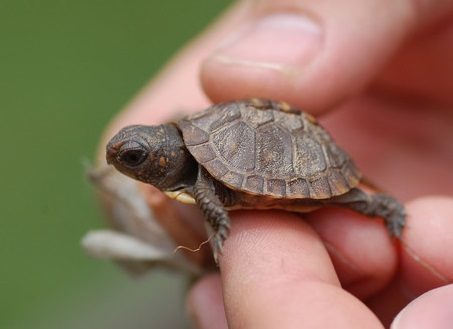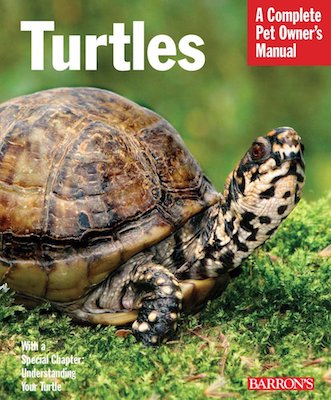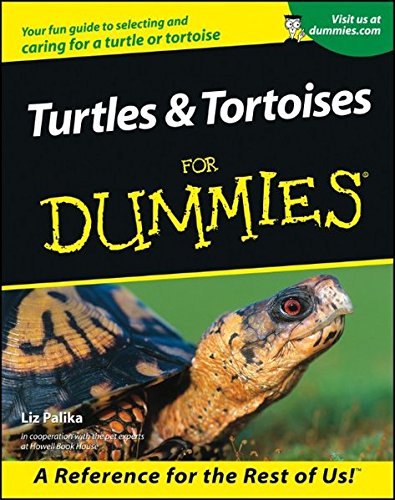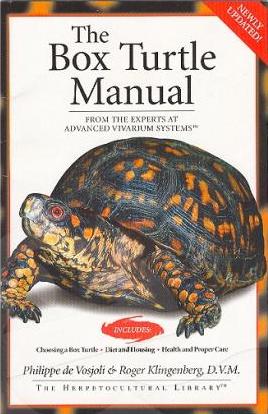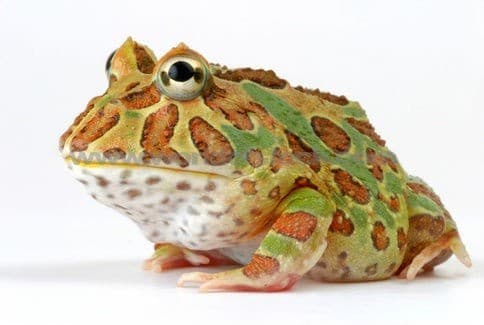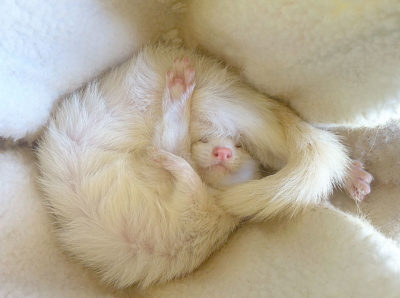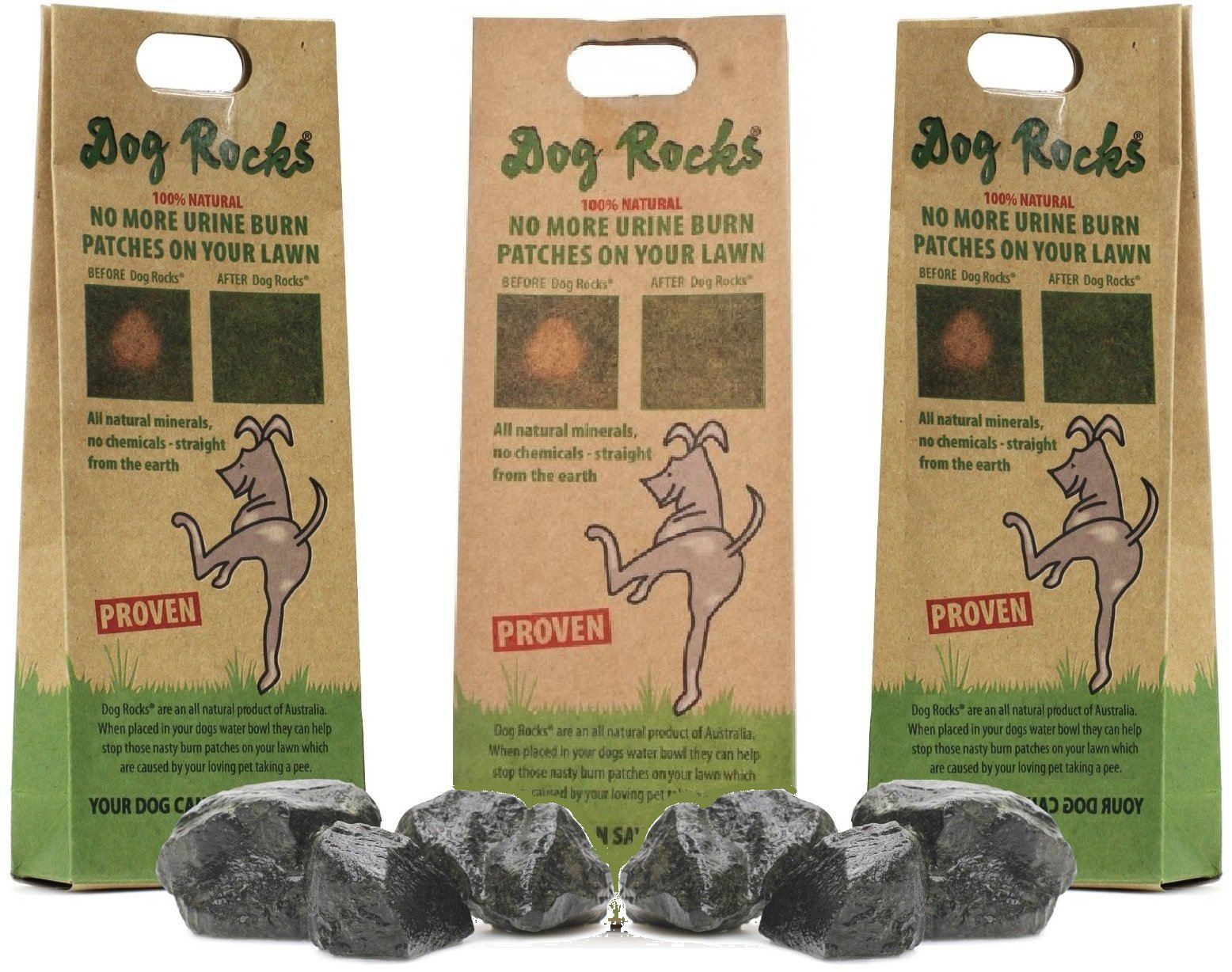Before buying a pet, you always want to do your due diligence. Many a pet has wound up on Craigslist or donated to a different owner because their first owner was not properly prepared. Truly, some pets take much more work than others. Turtles make wonderful first pets and are relatively low maintenance — especially small turtles.
A common occurrence with pet turtles is that owners will buy the wrong breed and they seemingly never stop growing! That means they have to upgrade to a massive tank or find a new home for their surprisingly big turtle that they may have grown attached to. In this post, I talk about the types of pet turtles that stay small and provide my readers with an overview of turtle breeds.
There are many names for small turtles such as:
- miniature turtles
- dollar turtles
- quarter turtles
- and dwarf turtles
It is important to note that all these are names for the same thing: very small turtles. In our first section, we have a list of the top breeds of turtles that stay small and the next section is our list of turtles you should be careful about buying if you don’t want a large turtle. By looking over those sections, you’ll find information that will help prevent you from buying the wrong type of turtle for you.
What Kind of Turtles Stay Small? Raising Turtles & Overview of Turtle Species
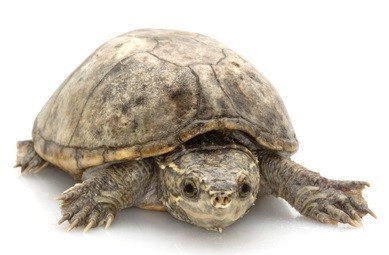
Turtles are one of the most popular exotic pets and some turtle breeds have found their way into the top reptile pets. Small turtles are adorable reptiles that make a convenient pet for both apartments and homes. They require less space and less time to take care of than most other furry pets and reptiles. There are over 250 species of turtles in the world. Only a select handful of these actually stay small even in adulthood. Many people want these types of turtles because they become more feasible to care for and find a suitable tank.
Small Turtles Still Take Big Work
Don’t think raising a turtle is a walk in the park though! A small turtle is just like any pet. They still want your love and attention. A pet turtle will need your care to grow up and stay healthy. Regular tank maintenance is required unless you want your poor turtle living in yucky and less than ideal conditions. You’ll want to clean your tank about every 3 weeks.
Other than a tank, you may want a pet carrier or container as well for your little turtle. This will give you a place to put the turtle during cleaning session quarantines and trips to the vet. Turtles need to be fed about 4-5 times a week and their water source should always be as fresh as possible.
Know the Gender
It is very important to stay aware of the differences in size between male and female turtles. As a general rule of thumb, males are typically smaller than females. It is very rare for a turtle to stay tiny, but you can find turtles that stay under 5 to 6 inches. Just because they stay small, you still want to buy a nice sized aquarium so they can stay active and healthy.
Fortunately, you don’t need to spend a lot of money like you would with some types of turtles. Before purchasing any pet, it is always a good idea to give the decision a lot of thought. Sleep on it. Do your best to determine if you are ready for the responsibility. The next step is the fun part: deciding what type of pet to buy.
Small Pet Turtle Benefits:
- Easier to handle. Simply due to their size, these turtles are much easier for parents and kids alike to handle.
- Great for homes and apartments. Small turtles are suitable for even keeping in small apartments. Larger turtles are certainly not.
- Tank Maintenance. The fact of the matter is that small turtles need less space and less food than large turtles. That makes cleaning and feeding less time-consuming.
- Adorable and cute. We couldn’t help but mention this perk of small turtles. Like puppies and kittens, the small factor really contributes to their desirability.
A Word of Warning: Be Aware of Local Laws and Endangered Species
As with most reptiles, it is important to be mindful of rules and regulations surrounding turtles. This will vary from location to location. For example, as one of our readers pointed out, box turtles are a common pet turtle species. However, they are protected and endangered in many places where their range is native. Furthermore, many types of turtles are illegal to possess without the appropriate license in the areas where they are considered native. We suggest finding a turtle species you are interested in, then doing research in regards to whether it is acceptable to have as a pet in your specific area.
Small Pet Turtles Need Care Too
Of course, small turtles are much easier to take care of and maintain. That being said even small turtles are a big responsibility. They want your love and attention. Furthermore, tank care is a big component of keeping a turtle (or any amphibian, fish, or reptile for that matter) healthy. You’ll want to clean the tank about once every two weeks and use a powerful filter to keep the tank water as clear as possible. If you don’t have much experience in these matters, we suggest one of these quick reads.
If you are interested in learning more about these fun creatures and how to take care of them, here are some recommended books:
1. Turtles Complete Pet Owner’s Manual by Hartmut Wilke
2. Turtles and Tortoises For Dummies by Liz Palika
3. The Box Turtle Manual (Herpetocultual Library) by Philippe De Vosjoli
Top 6 Species of Turtles that Stay Small
Here is our list of the best breeds of turtles that stay small. All of these turtles are readily available in the United States. These turtles usually stay smaller than 5 inches. Keep in mind that it is illegal to commercially sell turtles with a carapace length smaller than 4 inches in the United States. This being the case it is still legal to keep, breed, and give away these turtles to others. For example, a turtle breeder could breed miniature turtles and give these away to friends or family.
1. Mud Turtles
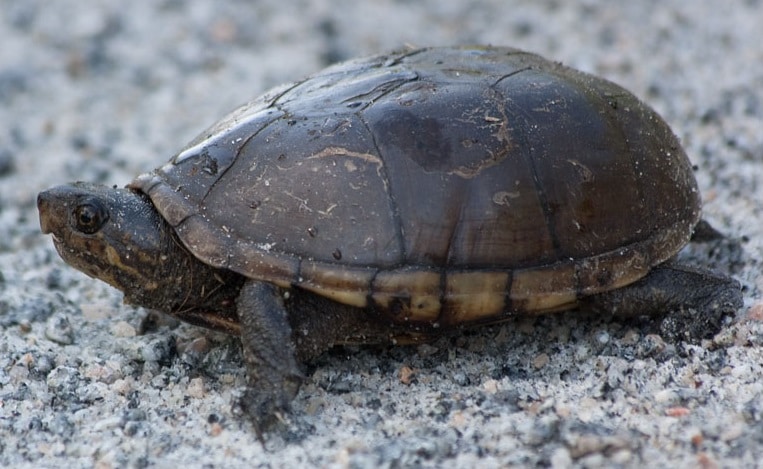
The common mud type of turtle usually grows to be about 4 to 5 inches long. Mud turtles live to be around 50 years old in captivity. The mud turtle is found in North America and parts of Africa. Common mud turtles and striped mud turtles grow to about 4.5 inches. Sonoran and yellow mud turtles will reach up to around 6 inches in some cases.
2. Musk Turtles
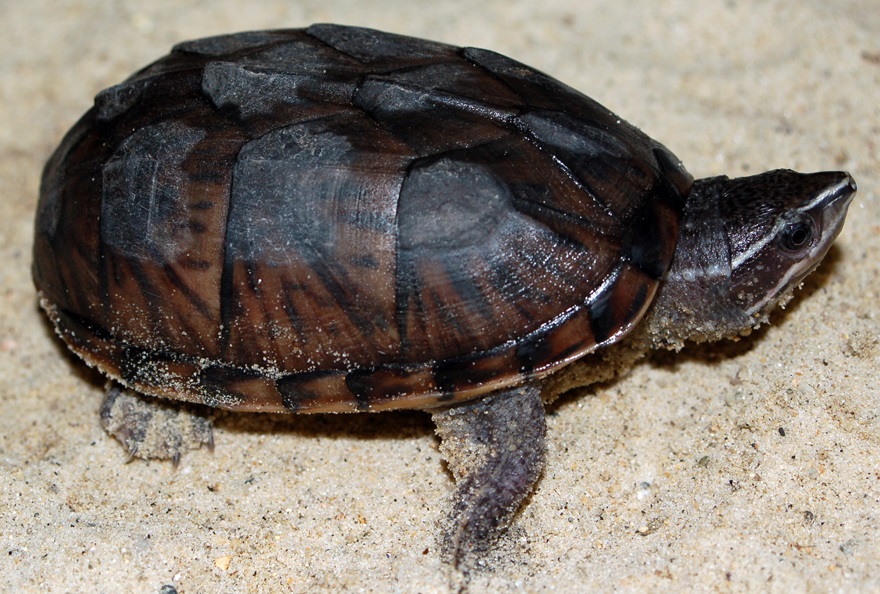
A lot of times people will group musk and mud turtles together because of their similarities. Like the mud turtles, musk turtles will live to be around 50 years old. They grow to about 3 to 4 inches in length and stay that size forever. Musk turtles make great pets and are good for owners new to raising turtles. The Stinkpot Common Musk Turtle is actually one of the smallest turtles in the world. There are four main species of musk turtles: loggerhead, common, flattened, and razorback.
3. Spotted Turtles
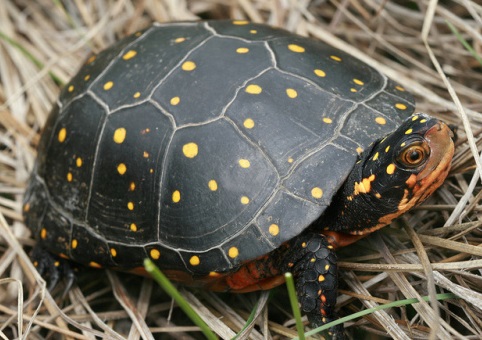
Spotted turtles are semi-aquatic species of turtle. It is easy to identify a spotted turtle. They have yellow spots on their necks, legs, shells, and heads. The rest of their body is a black color. They eventually reach a size of 3.5 to 5 inches in length. A 55-gallon tank is more than sufficient for spotted turtles. The ideal captive environment would be around 50% water and 50% land with a nice basking log.
4. Diamond Back Terrapins
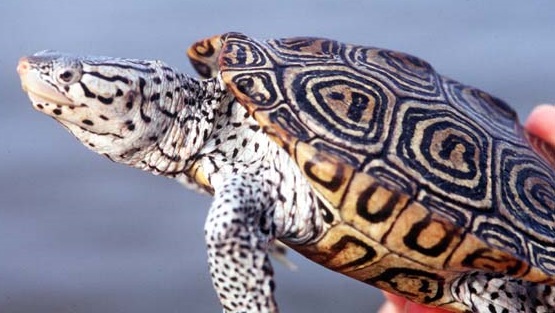
Terrapin turtles are actually one of the oldest animals on planet earth. While probably not the best for inexperienced turtle owners, diamond back terrapins to make great pets. They are prone to some fungal infections and carapace diseases so they require a bit more care to stay healthy. They do need a larger tank ~70 gallons preferably.
5. Reeve’s Turtles (Males)
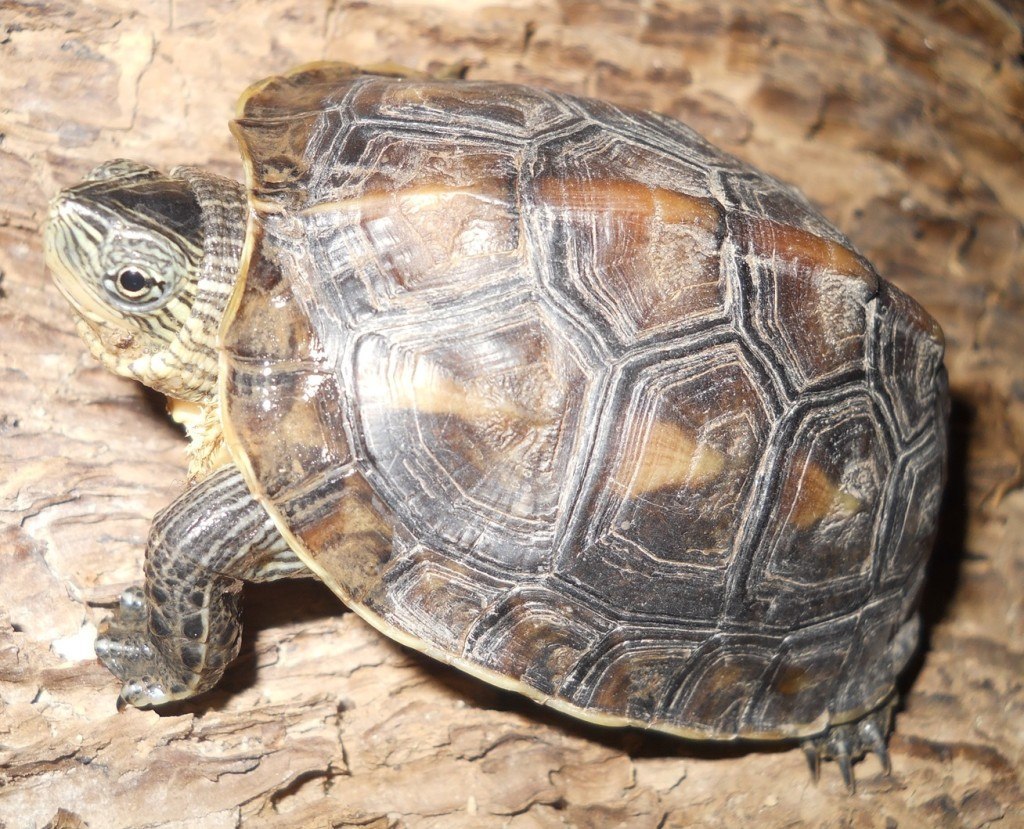
Reeve’s turtle is native to Japan, China, Korea, and Taiwan. They are distinguished by their rectangle shells rather than circular. You have to check their shell often as this type of turtle is susceptible to many shell diseases. They grow to about 5 inches long. A similar breed to the Reeve’s turtle is the Chinese pond turtle which makes great pets and stays about the same size too.
6. Box Turtles
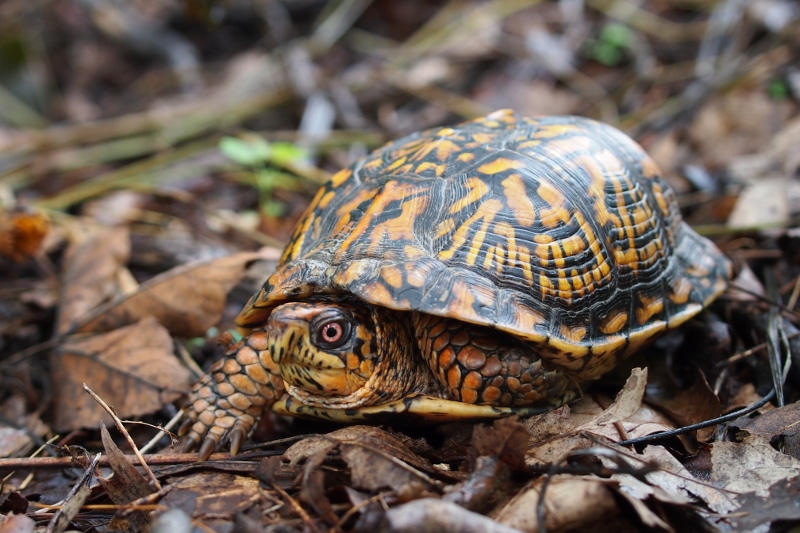
Box turtles are a very common breed of a pet turtle. While slightly more risky than other turtles on this risk in terms of growing larger, box turtles typically do not grow over 6 inches. This includes both the Ornate Box Turtle and the Eastern Box Turtle. On average they stall small in size and usually stay in the 4.5 to 6 inches range.
What Kind of Turtles do not Stay Small?
There are a few types of turtles that are pretty common and actually end up growing to be pretty big (relative to the turtles in the above list). Some rascally pet shop owners may try to pass one of these turtles off as a turtle that will stay small, but don’t be tricked. Many times they’ll try to pass red-eared sliders off as miniature turtles because they stay small for a while. These turtles can actually reach up to 14 inches long depending on the gender. If the turtle is green with orange cheeks (nearly red) you’ll know it is a red-eared slider.
Every once in a while there is an outlier in the above group that stays small. However, in general, this list of breeds will become much larger than the list of turtles that stay small.
If you are looking for a type of turtle that stays small you don’t want to try your luck with the following list:
1. Red-Eared Slider
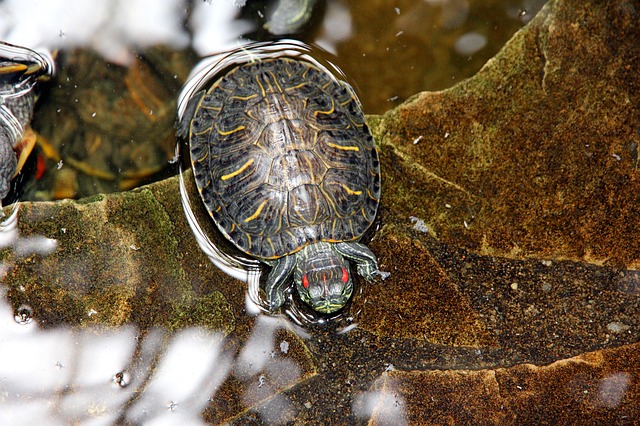
Red-eared sliders are a very common type of turtle in the United States. Full-grown adult red-eared sliders can get up to 12 inches long! These turtles are fully aquatic and can live for up to 60 years in captivity. Most of these turtles originate from Mexico and areas in the Caribbean.
2. Wood Turtle
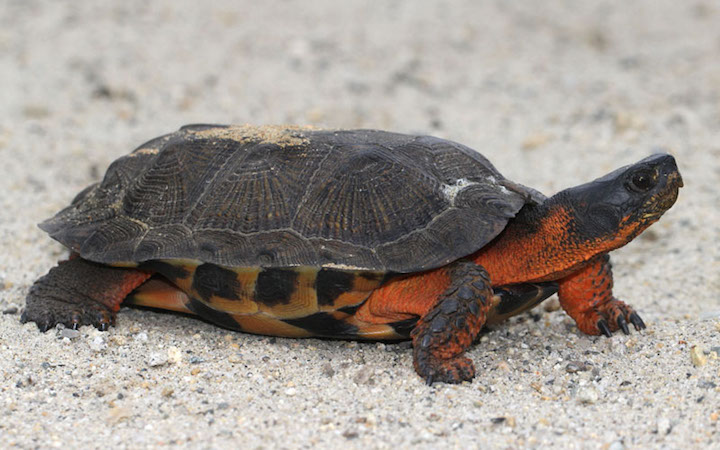
While not quite as large as red-eared sliders, wood turtles can reach up to about 8 inches in carapace length. For the most part, turtle owners find wood turtles very tame and friendly. However, this species of turtle is becoming rarer and getting quite pricey.
3. Map Turtle
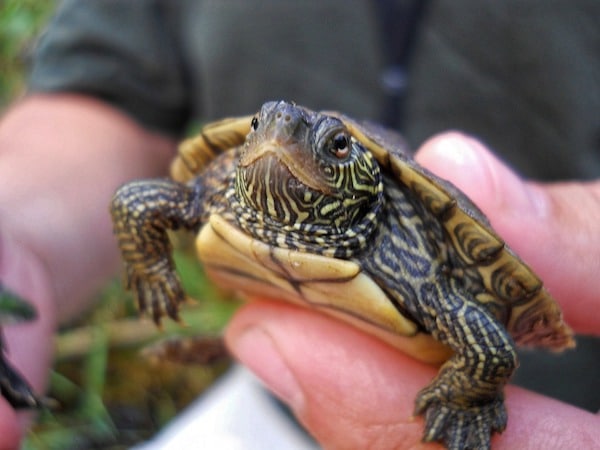
Female map turtles carapaces can get as long as 10.5 inches, though males range smaller and on average are less than 6 inches long. They are commonly found around the Gulf of Mexico, but some are found as far north as Quebec.
4. Western Painted Turtle
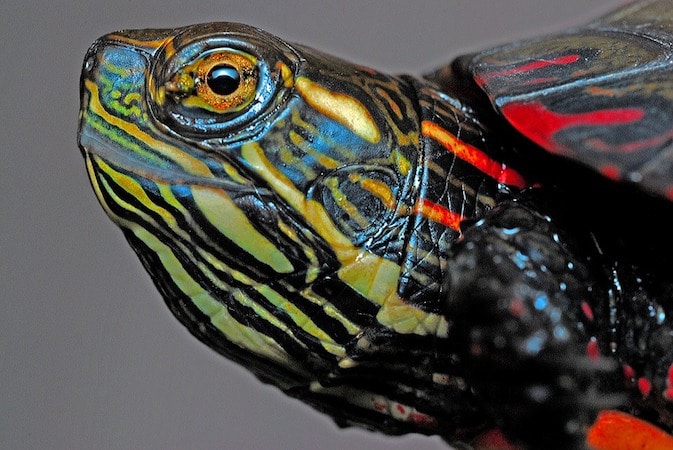
The pretty painted turtle is found all over North America. Because of their attractive coloration, there are many people and turtle farmers breeding painted turtles. Hence prices are very affordable. Western painted turtles can grow up to 8 inches in length. However, southern painted turtles do not usually exceed 6 inches. Eastern and Midland varieties of painted turtles are in-between those two usually not getting larger than 7 inches.
Best Breed of Turtles that Stay Small: The Musk Turtle
The best beginner turtle for a new turtle owner would be a common musk turtle (Sternotherus Odoratus). It is a member of the family Kinosternidae. The musk turtle is an aquatic turtle. They are a hardy type of turtle and make great pets. Musk turtles usually have a dark brown or black body with yellow markings.
They are very inquisitive, like to explore, and are sometimes like little mountain climbers the way they will cruise around aquariums. Unlike some species of turtle, they are not very susceptible to shell diseases or other types of illnesses. The types of mud turtles are razorback, loggerhead, flattened, and common.
Musk turtles rarely, rarely grow beyond a length of 5 inches. They are your best bet if you’re looking for a turtle that stays small forever. As I mentioned before, musk turtles may live up to 50 years old in a tank. The ideal tank for a musk turtle should be fitted with a slab of slate or a log for basking, a spotlight will a low-wattage bulb (~40-watt), hiding spots, climbing areas, and feeding spot. A 20-gallon tank is sufficient for a single adult musk turtle. 40-gallon tank can house a pair of musk turtles.
